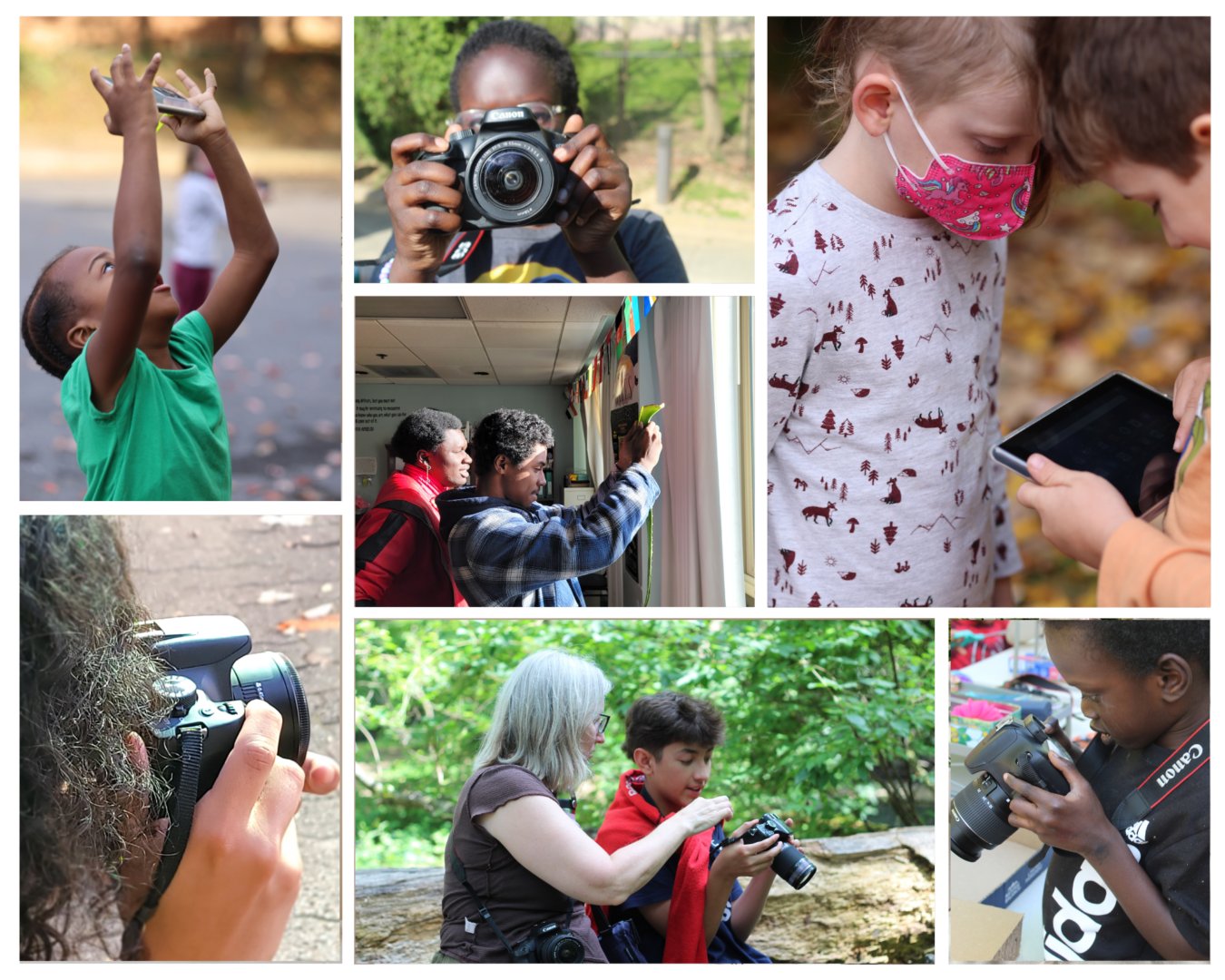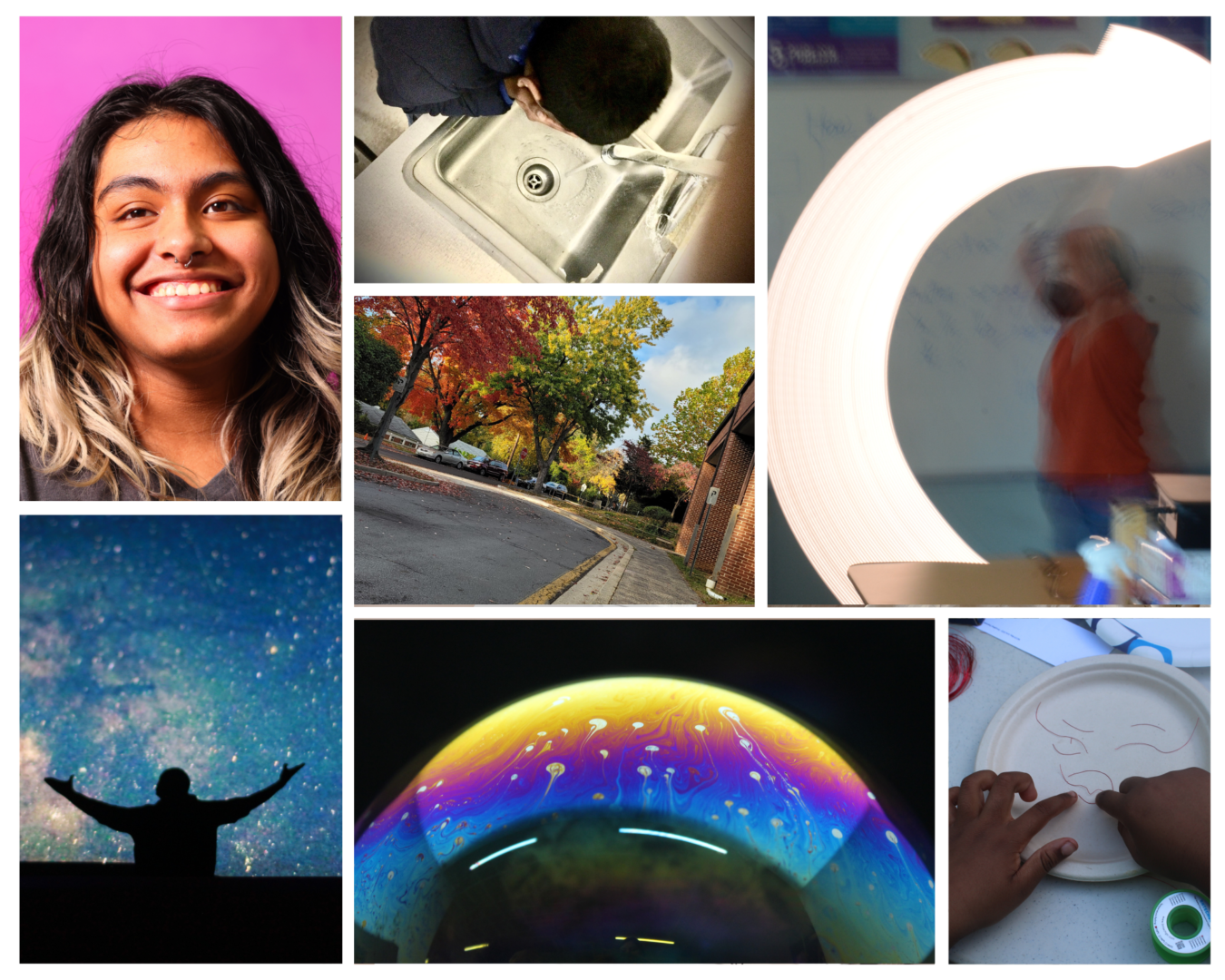Spotlight on an Artist
My name is Jessica Wallach. I am a camera based artist and I am a teaching artist for Story Tapestries. I teach the power of photography today and how to use a camera. We often start off using big DSLR cameras to teach camera basics. However, we know that most students will use cell phone cameras for most of their lives. The truth is a camera is a camera is a camera. If you know how to take a good photo, you can use any camera to do so. Yes, better technology is helpful – better glass, more pixels, a faster processor – all make a difference. Yet so does knowing how to read the light, how to wait for the right moment, how to get the most out of a slow shutter speed, and how to get the right angle.

The Power of the Cell Phone
Shortly after cell phones came out, I noticed what a powerful tool they were. I realized how they can replace the need for pen and paper or be used in conjunction with pen and paper. Sometimes it’s faster to take a photo – case in point copying notes off a board or telling people what you want for your birthday. It is much easier to show than tell with a camera than it is with words. Sometimes you capture more information such as if you are trying to draw a butterfly or study a bee. You can stop them in flight, blow it up, trace it, count things on it and really observe it in a way that simply observing with our eyes and taking notes we cannot do. Cameras allow us to see what is hard to see… I always ask people who come work on my home how they use cameras in their jobs. The electricians use their cell phones to take photos of what is in between the walls, what is hard to see. Other people use it to confirm work was completed or that a package was delivered. Cell phone photography has become a common workplace skill.
Learning to Teach Camera Work as a Communication Tool
With these observations of the benefits of cell phone photography in hand, I set out to learn all the different ways people are using cell phones to take photos. I wanted to know how to teach camera work to be a good citizen, student, worker, friend and family member. It became clear to me that understanding camera work is a 21st century skill as important as learning how to write…so I worked at schools to figure this out. I taught handwriting and creative writing. We used cameras to document science projects and tell stories and notice our environment. I invited kids to match words with images and taught them to read images. I attached myself to every school project I could to integrate camera work into every type of learning imaginable. The goal was to figure out how to teach camera work as a life skill, not just as an art skill (my friend Charles will remind me that all art skills are life skills), and then find a partner with whom I can teach this skill far and wide. I have found that partner in Story Tapestries.
Working with Story Tapestries as a Teach Artist
It’s been a little over a year since I started working with Story Tapestries and I have gotten to teach so many people… I have worked with:
- Kids ages 2 to 14 at a Montgomery County Coalition for the Homeless shelter. We used a camera to document work, create portraits, investigate nature and to study bubbles.
- 6th graders in Prince George’s county. We used camera to investigate a story written by Langston Hughes.
- Teenagers and young adults from Latin American Youth Center. We have done a wide range of things: a workshop on LinkedIn and how to use photography to get the job you want; studying contrast as a superpower and exploring how understanding contrast can help them take the GED; how photography is used in science; studying a documentary of the Latino Community in Mount Pleasant and then using that as a jumping off point for our own photos for a field trip there.
- Working with students from 1st to 5th grade on The Art of Seeing.
- Working with high school students at Homewood and investigating the power of contrast.
- At the YMCA Metro Washington we used photos to look at important issues in a collaborative setting involving youth and adult mentors.

What people need most is to practice, practice, practice, and then the space to really notice what is working and to ask, “Why didn’t this work?” It is the regularity, the knowing there is a time, place and space to use a camera.
My goal for the next year is to do more – work with our staff and teaching artists on how to document our work, to continue to work in these spaces I worked in last year, and then go bigger. We all are using our cell phones to take photos and document our work and art and engage people. I hope to do a Tech Savvy Soundbyte episode in the fall to share these tips with a wider audience. I would love to know how you use your cell phone camera, what you have figured out and what is hard.
Learn More
Here are some tips and ideas to help you to tell your story through the lens:
Click here to start the fun!
Read the blog post: Exploring Important Issues Through the Lens
See Jessica in action teaching a class: Documenting Your Work with the Kennedy Center
More about Story Tapestries
- Check out our 2022 Annual Report to learn more about program impact
- Join us as we Elevate Voices and Celebrate Community on October 22, 2023

